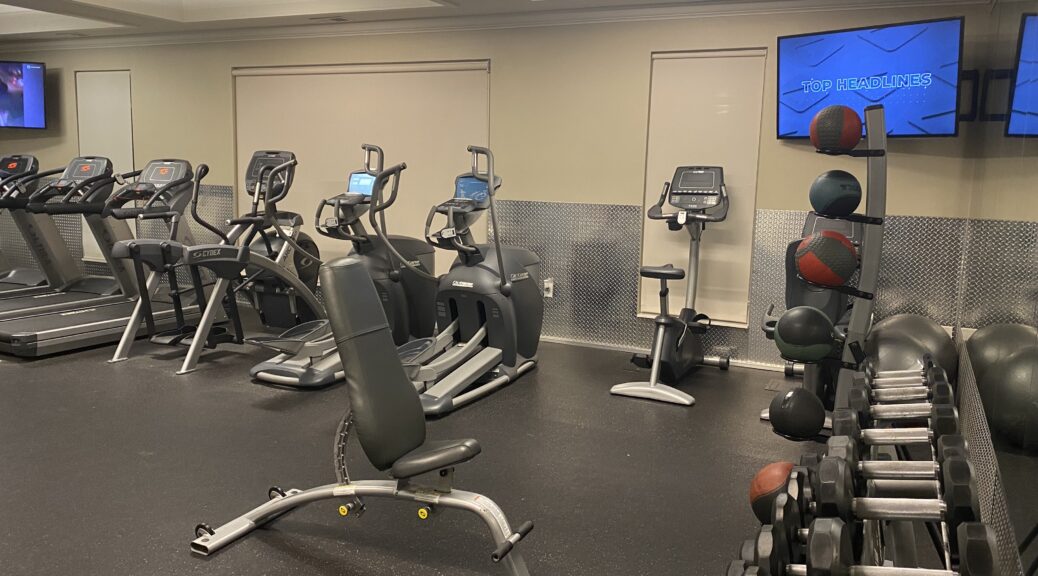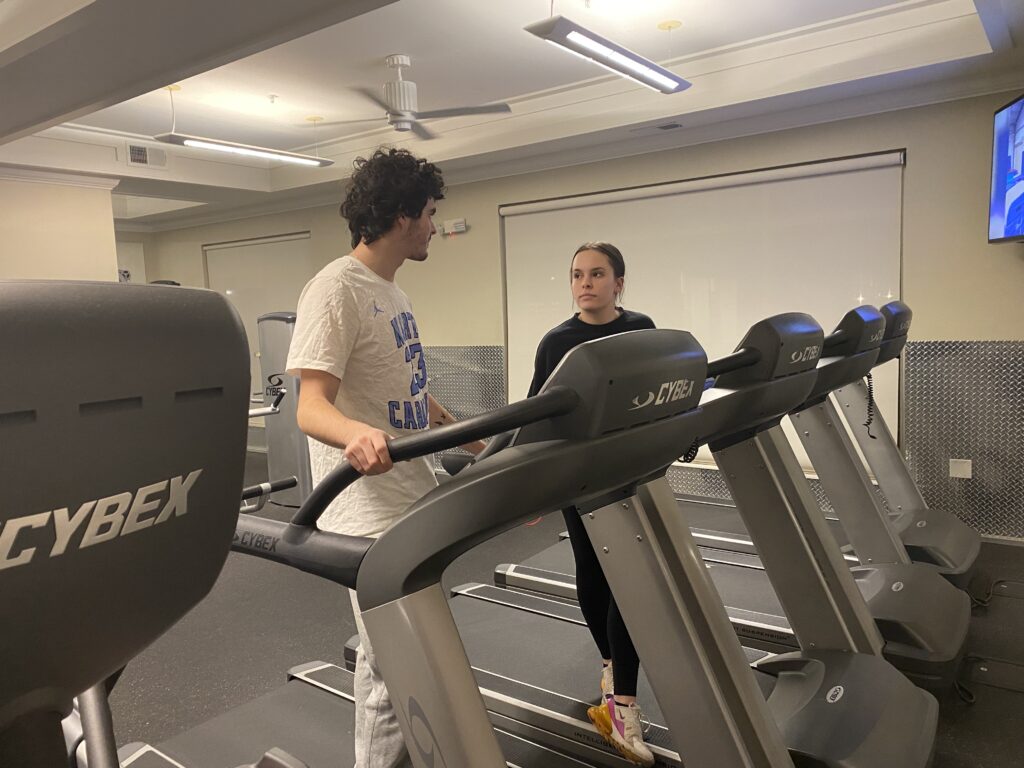
Women receive more long term health benefits when exercising compared to men
There are considerable differences when it comes to the long term benefits of exercising between men and women.
According to a recent study, women have a much lower risk of experiencing an early death or fatal cardiovascular event compared to men when both genders exercise regularly. Additionally, the study also found that women can reap these benefits even when putting in less effort.
The study was conducted by the Smidt Heart Institute at Cedars-Sinai in Los Angeles, and the findings were later published in February of 2024 by the Journal of the American College of Cardiology (JACC). Dr. Susan Cheng is the director of the Institute for Research on Healthy Aging in the Department of Cardiology in the Smidt Heart Institute and senior author of the study, and she said in a National Institutes of Health (NIH) press release she hopes the results of the study encourage all to take part in these benefits; especially women.
According to the NIH press release, ‘“It is an incredibly powerful way to live healthier and longer,”’ Cheng said. ‘“Women on average tend to exercise less than men and hopefully these findings inspire more women to add extra movement to their lives.”’
Data was analyzed from 412,413 U.S. adults ranging from ages 27-61 using the National Health Interview Survey database, and the researchers excluded any possible participants with preexisting conditions or limitations. Kent State University associate professor and program coordinator of Exercise Science and Exercise Physiology Derek Kingsley, was not part of the study, but he said this study holds a lot of power because of its large sample size and controlled variables.
“They did a lot of really specific things to make sure that the men and women were matched on as many parameters as they could be to really see that is it really the exercise that’s separating these two sexes? And that’s exactly what they showed,” Kingsley said.

Data was also taken during a 22 year period from 1997-2019. During that time frame participants provided survey data on leisure-time physical activity in relation to type, intensity, frequency, and duration; participants were also under surveillance for all-cause and cardiovascular death. In regards to all adults engaging in physical activity, the mortality risks were lower than those who were inactive.
“Hypertension is high blood pressure, and what that means is your heart is having to work and do more work to help overcome that blood pressure,” Kingsley said. “Exercise can help out with the blood pressure, the heart rate, the cholesterol, blood glucose and all these other contaminant diseases that are oftentimes associated with being overweight or obese.”
Derek Kingsley
“Exercise can help out with the blood pressure, the heart rate, the cholesterol, blood glucose and all these other contaminant diseases that are oftentimes associated with being overweight or obese.”
The study found that on a weekly basis, men needed 300 minutes of moderate aerobic physical activity, 110 minutes of vigorous aerobic activity, and three sessions of strength training to reach their maximal survival benefit. On the other hand, women could reach these levels of benefits at 140 minutes for moderate aerobic activity, 57 minutes for vigorous and 1 strength strength training session on a weekly basis. Additionally, it was also discovered that women can receive more benefits than men when reaching that 300 minute mark for aerobic activity and multiple strength-training sessions per week.
According to the NIH press release, ‘“Even a limited amount of regular exercise can provide a major benefit, and it turns out this is especially true for women,”’ Cheng said. ‘“Taking some regular time out for exercise, even if it’s just 20-30 minutes of vigorous exercise a few times each week, can offer a lot more gain than they may realize.”’
The overall results were that women who regularly exercise had a 24% reduced risk for an early death compared to women who didn’t exercise and a 36% reduced risk for a fatal cardiovascular event. On the other hand, men who regularly exercised were 15% less likely to experience an early death compared to men who didn’t exercise and 14% less likely to experience a fatal cardiovascular event.
University of Toledo associate professor of physiology and pharmacology Lauren Koch said these differences in exercise duration and mortality are because women are able to reach their VO2 max sooner than men can. Which means that women can reach the maximum amount of oxygen their body can utilize during exercise at a faster rate.
“If you were to do a maximal amount of high intensity exercise, like how they study what’s called your maximal oxygen consumption, all of these factors take into effect your muscle strength, your endurance, your brain capacity and how your brain’s affecting blood flow,” Koch said. “You need oxygen to utilize ATP (Adenosine triphosphate), and then the ATP then generates energy. … Maximal oxygen is probably the strongest predictor of health.”
“If you were to do a maximal amount of high intensity exercise, like how they study what’s called your maximal oxygen consumption, all of these factors take into effect your muscle strength, your endurance, your brain capacity and how your brain’s affecting blood flow.”
Lauren Koch
Women can reach their VO2 max sooner than men due to multiple variations in anatomy and physiology. Hormones such as estrogen could also play a role as well.
“Women have smaller hearts, smaller lungs, shorter aortas and less blood volume, so they tend to have a higher heart rate at rest to pump that volume on the smaller heart compared to men,” Kingsley said. “It allows the blood vessels to be what we would call compliant, so estrogen allows the vessel to stretch and maintain that stretch which allows the flow of blood to move easier without resistance.”
The study also referenced variations in anatomy and physiology that could account for these differences.
According to the NIH press release, “Men often have increased lung capacity, larger hearts, more lean-body mass, and a greater proportion of fast-twitch muscle fibers compared to women. As a result, women may use added respiratory, metabolic, and strength demands to conduct the same movement and in turn reap greater health rewards.”
Researchers hope this study motivates all to take the opportunity to improve their short and long term health by exercising. Dr. Martha Gulati, director of Preventive Cardiology in the Department of Cardiology in the Smidt Heart Institute at Cedars-Sinai and co-lead author of the study particularly hopes women take interest.
According to the Cedars-Sinai press release, ‘“Women have historically and statistically lagged behind men in engaging in meaningful exercise,”’ Gulati said. ‘“The beauty of this study is learning that women can get more out of each minute of moderate to vigorous activity than men do. It’s an incentivizing notion that we hope women will take to heart.”’
Taylor Yaksic is a Kent State University student who exercises on a regular basis four days a week. She said the study gave her a new perspective on the long term benefits of exercise.
“It makes me want to work out more, and it makes me want to make sure my health is as good as it is now and stay consistent with it,” she said.
“It makes me want to work out more, and it makes me want to make sure my health is as good as it is now and stay consistent with it.”
Taylor Yaksic

